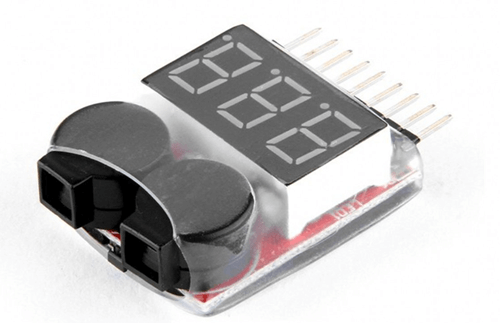

2600mAh as shown on the battery in the picture is equal to 2.6Ah (amp hours), a format you may be more familiar with on larger batteries, like the SLA (sealed lead acid) one in your car, which is probably around 50Ah. Capacity - Usually measured in mAh (milliamp hours), this is determined by the cell arrangement (parallel) and tells you how long you can expect the battery to last on a charge (although it's not quite that simple).

Often times the parallel arrangement is omitted when discussing batteries, because most packs are 1P (so instead of saying you're using a 3S1P pack, you may as well just say 3S). If it were a 3S2P battery, there would be 2 sets of 3 series-wired cells in parallel, resulting in 6 cells total. By multiplying the 3 and the 1, you get the total number of cells in the battery, which in this case is 3. This may seem confusing because it says "1P," but think of the arrangement as a grid.
#Lipo voltage monitor series
The battery shown in the second image reads that it has an arrangement of 3S1P, meaning it has 3 cells that are all in series with no parallel wiring. As you may know, series adds the voltage of the cells and parallel adds the capacity of the cells, so a combination of cells in series and parallel results in a battery. S stands for series and P stands for parallel. Batteries are made up of cells, whose voltage is determined by cell chemistry and whose capacity is determined by energy density and physical size of the cell. Cell arrangement - Described using the format xSyP (where x and y are integers), this tells you how the cells in the battery are wired up. When you look at a LiPo's data sheet or casing, you will notice it has a lot of specs. Everything may seem a bit daunting at first, but with some basic understanding, it's all pretty simple, so let's jump in.

If you're new to lithium polymer/LiPo/LiPoly batteries, there are a lot of terms you will need to know before we get started.


 0 kommentar(er)
0 kommentar(er)
